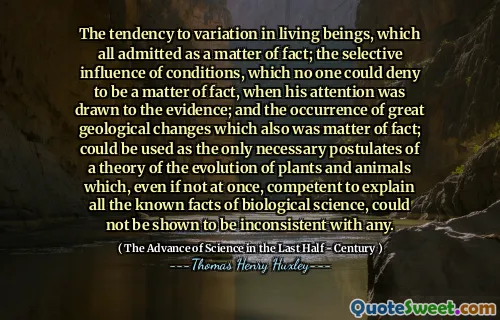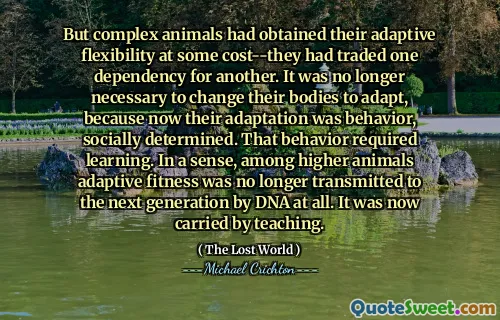
The tendency to variation in living beings, which all admitted as a matter of fact; the selective influence of conditions, which no one could deny to be a matter of fact, when his attention was drawn to the evidence; and the occurrence of great geological changes which also was matter of fact; could be used as the only necessary postulates of a theory of the evolution of plants and animals which, even if not at once, competent to explain all the known facts of biological science, could not be shown to be inconsistent with any.
Thomas Henry Huxley's observation underscores the fundamental pillars supporting the theory of evolution. The recognition of inherent variation among living organisms, combined with the influential role of environmental factors, forms the basis for understanding transformative processes in biology. These facts are not merely theoretical constructs; they are observable realities that any diligent scientist can verify through empirical evidence. Additionally, acknowledging significant geological shifts reminds us that Earth's physical history has shaped biological development profoundly. These three postulates—variation, selection driven by environmental conditions, and geological change—serve as a robust, minimal foundation upon which the grand edifice of evolutionary theory rests. Importantly, Huxley reminds us that these propositions can be accepted as necessary and sufficient; even if they do not initially elucidate every detail of biological phenomena, they do not conflict with existing facts. This pragmatic approach exemplifies scientific humility, emphasizing that theories should align with observable facts and remain open to refinement. It also highlights the great scientific progress achieved by grounding complex biological processes in straightforward, observable truths. The selection of these postulates as core principles exemplifies how scientific theories often build from simple, undeniable facts before expanding into comprehensive explanations. This humility and empiricism continue to underpin the scientific understanding of evolution today, illustrating how foundational observations can generate profound insights.




